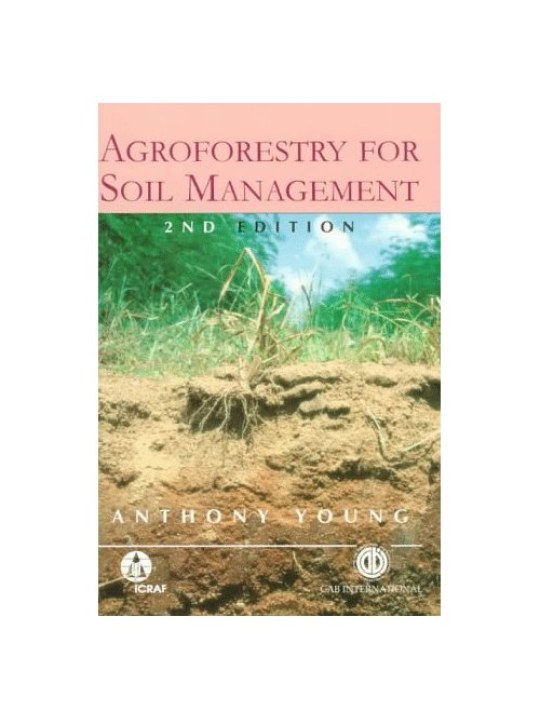Agroforestry for Soil Management, 2nd Edition
by A Young, University of East Anglia, UK, formerly of the International Centre for Research in Agroforestry (ICRAF), Nairobi, Kenya
Pub Date: December 1997
Hardback
320 pages
Readership
Students of agroforestry as well as agronomists, soil scientists and foresters.
Main Description
Agroforestry refers to land use systems in which trees or shrubs are grown in association with agricultural crops, or pastures and livestock. From its inception, it has contained a strong element of soil management. Well-designed and managed agroforestry systems have the potential to control run-off and erosion, maintain soil organic matter and physical properties, and promote nutrient cycling. By these means, agroforestry can make a major contribution to sustainable land use.
The previous edition of this book, entitled Agroforestry for Soil Conservation (1989), was based on indirect evidence from agriculture, forestry and soil science. The present work provides a new synthesis, drawing on over 700 published sources dating largely from the 1990s. These include both results of field trials of agronomy systems, and research into the plant-soil processes which take place within them. Soil conservation in its narrower sense, the control of erosion, is treated alongside other equally important aspects of soil management, such as nutrient cycling.
The new edition summarizes the present state of knowledge and indicates needs for research. It is essential reading for all concerned with agroforestry, whether as students, research scientists, or for practical purposes of development. It is also of interest to soil scientists, agronomists and foresters.
Anthony Young was for nine years a Principal Scientist with the International Centre for Research in Agroforestry (ICRAF), Nairobi, Kenya. He was previously Professor of Environmental Sciences at the University of East Anglia, Norwich, UK, from which he received the degree of Doctor of Science. He was a joint author of the FAO standard texts on land evaluation and land use planning. Besides these, his other books include Soil Survey and Land Evaluation (1981) and Land Resources: Now and for the Future (1998). He is now Honorary Research Fellow in Environmental Sciences at the University of East Anglia.
Main Contents
• Preface
• Agroforestry, soil management and sustainability
• Effects of trees on soils
• Soil and water conservation
• Soil water management
• Soil organic matter and physical properties
• Nutrient cycling and nutrient use efficiency
• The role of roots
• Agroforestry systems for soil management
• Modelling
• Research
• Agroforestry, land use and the environment
• Conclusions

